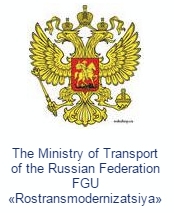International forum
“Marine Industry of Russia”
Moscow, “Gostiny Dvor”
Exhibition Hall,
May 18-20, 2011
Time left till opening of the Forum:
98 days 21 hour 54 minutes
Electronic catalogue
Search for the participant >>>
Enter the site >>>
Forum bulletin
NEWS of marine Forum
December 14, 2010
New Year special offer! Gift registration fee for participation in Forum till January 15!
October 12, 2010
“It is feasible to develop high-technology relying on domestic resources!”Interview with Lev S. Lazarev, Director General of “Muromsky Radiozavod
October 11, 2010
There was a new Bulletin of the Forum!
More on shipboard equipment of general purpose
Hold Systems
Hold systems are designed for water extraction which was accumulated in the vessel hold due to insufficient tightness of hull plate or wet cleaning as well as when a vessel is damaged or fire-extinguishing system is actuated.
The hold system comprises pumps, pipelines, shutoff and distribution fittings, and controls. Dewatering (bilge pumping) and ballast pumping systems can also be parts of the hold system.
Dewatering system comprises portable and stationary deep-well pumps with capacity of 1,000-2,000 m3/h. Special design ensures system operation even when some of its parts are destroyed.
A ballast system ensures the possibility of fluid pumping in and out for the purpose of increasing vessel stability. The fluid is pumped in and out by means of ballast, fuel and cargo tanks. The system also ensures fluid transfer between tanks.
The operation of the hold system is related to operation of an onboard fire-extinguishing system.
Onboard Fire-Extinguishing Facilities
There are several basic fire-extinguishing facilities to be available aboard:
- fire alarm system;
- stationary fire-control units and mobile (portable) fire-extinguishers;
- auxiliary equipment (pumps, fire hoses and hose nozzles, protective clothing).
The fire alarm system comprises detectors, warning means and initial fire-fighting facilities (sprinklers and drenchers, coolant pumps and so on). The detectors record temperature raise or smoke and actuate light and audio alert. Detector data is communicated to a special panel or display equipped with lamps corresponding to each room (the simplest display mode). Lighting of such lamp means fire in the corresponding room.
Depending on type of ignition, stationary fire-extinguishing systems can be of water or foam type, or use carbon dioxide or inert gas.
Water fire-extinguishing systems are the most commonly encountered on board since their consumable material is available and effective. However, their application is limited. They are unfit for extinguishment of energized facilities, inflammable materials and gases, many metals.
The water fire-extinguishing system consists of pumps with continuous access to seawater, pipelines (fixed and flexible, like a fire hose), fire hydrants, fire hoses, water-jet and water-spray nozzles. The system is to be equipped with fire-fighting fittings of international standards ensuring connection of external water sources (for example, in case of a fire in a foreign port).
The systems are used for water screen and water fog making. By means of these, fire can be contained, and surfaces near the place of fire can be cooled and protected. Water screens and water fog are used in machinery and pumping compartments.
The water fire-extinguishing system may comprise an outside water flooding system. It is used to prevent explosions in a damaged or ignited room.
Foam extinguishing systems are used for fire-fighting in pumping, machinery and cargo compartments. In addition to the foam concentrate, such systems use water, so the foam extinguishing system is to be connected to the water system by means of pumps and pipelines.
Carbon dioxide fire suppression systems are also used in pumping and machinery compartments. It can also be used in boiler compartment and for extinction of equipment design for operating voltage of up to 1,000 volts. Such system uses carbon dioxide (contained in special cylinders). Before fire extinguishing by means of this system starts, people are to be evacuated from the compartment.
In addition to stationary systems, some types of portable fire extinguishers as well as supplementary charges and cylinders are to be onboard. Fire extinguishers, fire detectors and individual components of fire-extinguishing systems need regular maintenance and are to be accompanied with instruction and operation manuals.
Shipboard Potable and Waste Water Equipment
The shipboard potable water equipment means distillation plants and tanks for further storage of distilled sea water.
Distillation plants desalinate sea water down to 1 g/l. Their operation principle can be based on thermal treatment (distillation or congelation), electro-dialysis and reverse osmosis method. Reverse osmosis systems advantage with guaranteed water purity, simple operation and relatively low energy consumption. Such plant can treat up to 500 m3 of water per day.
The plant can also be used for ship sewage purification in accordance with MARPOL 73/78 Convention. Sewage-deck drain system is used for water treatment with application of biochemical and physical-chemical methods.
Physical-chemical ones are considered to be the most advanced, since they eliminate suspended substances by 97% and petroleum derivative by 99%. Failing special purifying plants, the vessel is to be equipped with contaminated water storage reservoirs. Among design features of water-treatment system pipelines, there are special hydraulic valves represented by pipe bends preventing ingress of gases and smells to rooms.
As for water storage tanks, interior surface coverage should be taken into account. As of today, paints В-Ж-41, КО-42, enamels УР-41, УР-41Л, Э-76, and so on are used for this purpose. Reserve water tanks are also to be provided aboard (minimum acceptable number of tanks is two).
Special plants where water is pumped through ionized bactericidal filters are used for increase of storage period.
Shipboard Microclimate Systems
Shipboard microclimate systems comprise equipment ensuring premises temperature conditions, ventilation and air conditioning.
For heating, air, water and steam systems as well as electrical heaters are used onboard.
Water heating is used in accommodations and offices, steam heating – in engineering and utility services rooms (machinery compartment, store rooms, and so on). Water and steam circulate due to pumps, tanks and valves as well as gravity system which uses hot and cold water density difference.
Air systems consisting of electric heaters and fans become widespread due to their simplicity and efficiency. Their energy-saving properties are provided by two-stage air heating: in the common line, it is heated up to 20°C, and in cabins, up to the temperature needed.
Air heating systems are connected to the ventilation. The shipboard ventilation can be uncontrolled (through air-ports, scuttles, doors, turn and ejection caps when a vessel in on the run), mechanical (conditioning systems, air intakes, electric blowers, and air distribution fittings), and combined.
Besides, by operating principle, ventilation systems can be of supply, exhaust and supply-extract types.
The purity of supplied and exit air is provided by special filters. Plugs and sound-absorbing nozzles lower noise level.
For air conditioning systems, it is important to be equipped with gas proof fittings which blocks air flows in case of fire thus localizing it.
Situation in Russia
Domestic manufacturers offer a great variety of pumps, valves, shutoff and distribution fittings as well as distillation and sewage disposal plants. The market offers Russian fire-extinguishing installations and fire-extinguishers as well as fire-proofing paints and coatings. In addition to decorative function, such paint prevents surface combustion without loading it.
© Marine Industry of Russia, 2009-2010. All rights reserved.
By: “Ideological buiseness-projects”
Design by Valentina Ivanova.








